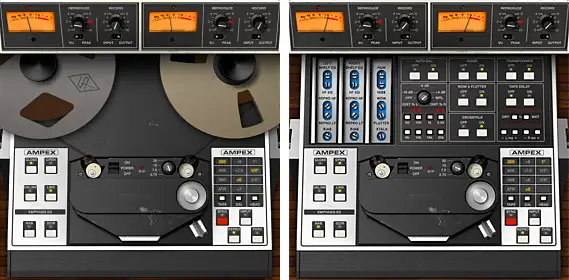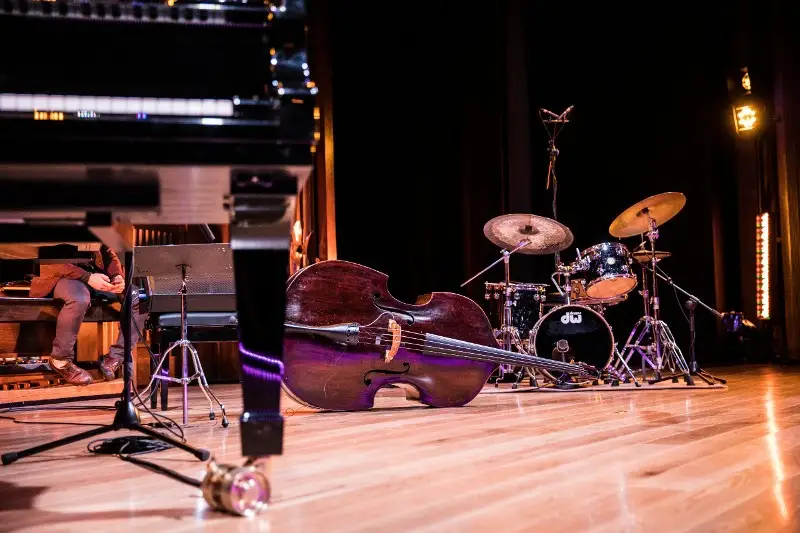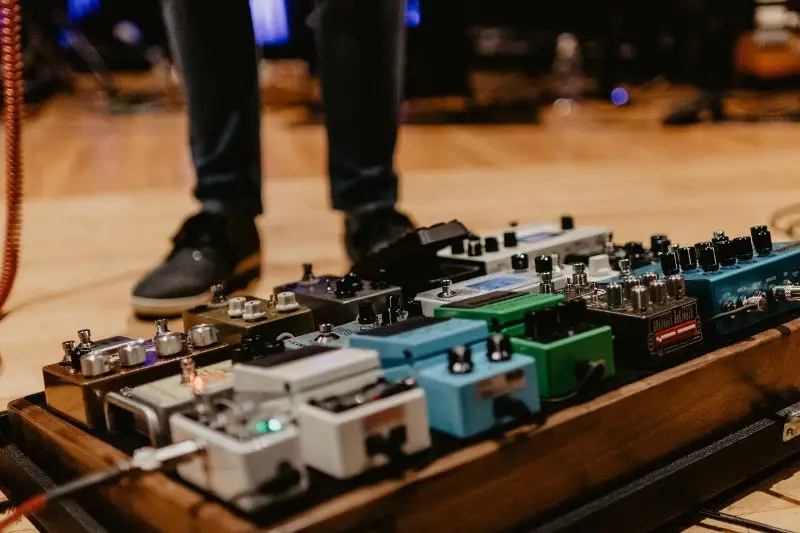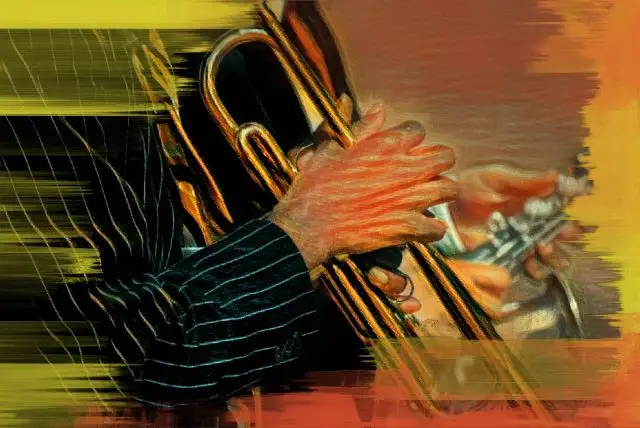Mixing jazz music offers a unique challenge, taking us back to the roots of one of the most enduring genres in music history. Unlike many contemporary styles that continuously evolve with technological advancements, jazz has remarkably retained its authentic sound over the past decades.
The true mark of a skilled engineer shines through in their approach to mixing a jazz record, where the essence of live performance reign free and subtle dynamics must be preserved, rather than reinvented. If you're someone who's used to mixing pop, rock, hip-hop, or electronic music, it can be difficult to make a departure from what you currently understand as a mix engineer.
Jazz mixing requires a more nuanced approach, from capturing the spontaneous interplay between instruments to respecting the acoustic space that defines its sound. Today, we're going to explore 13 proven tips and techniques for mixing jazz and explore how embracing these unique approaches can make you a better audio engineer!
1. Keep Things Natural
Jazz music has long been deeply embedded in the clubs and speakeasy scene. Even to this day, it carries with it the essence of the natural acoustic spaces where it first resonated.
This connection to its environment is not just historical but a significant aspect of the genre's sound and appeal. The live, spontaneous, and interactive performances, which are typical of jazz, thrive in these acoustic settings! We want to hear the nuances of the room's reverb and the interaction between the musicians in the band, even if it's not technically "perfect."
In keeping with tradition, most jazz instruments are played in their pure, unamplified form, whether upright bass, sax, or piano. As a mixing engineer working with jazz, the challenge is to maintain that natural authenticity. If you're in charge of the recording session, this also means carefully considering microphone placement in the room.
Unless the artist specifically tells you to venture out and try something experimental, your primary aim should be to replicate the feel of being in the room with the musicians.
2. Go Easy With Compression
The emotion in jazz lies in the dynamics, so being gentle with compression is key.
The inherent dynamic range of jazz - from the softest brush hit on a snare to the full blast of a bombastic brass section - tells a story. The tension and release is everything , which is why one of the biggest mistakes mix engineers can make is over-compression.
The last thing you want to do is rob the music of its lifeblood and rip the ebb and flow from it.
When using compression in jazz, have a clear and explicit purpose. For instance, you might use a compressor on a double bass with a light touch to even out the levels between pizzicato notes and bowed passages, so that both sit nicely in the mix.
On a piano, compression can be applied to gently tame the peaks of more aggressive staccato passages while preserving the expressive volume variations of softer, more lyrical sections.
3. Use Tape Saturation

Some of the best jazz records were recorded to tape, so whether you know it or not, the sound and saturation that you get from it is something you're used to hearing.
Tape saturation is one of my favorite types of saturation to use in a mix, especially when you want warmth, character, and cohesion. Even when used subtly, it can be quite impactful. Beyond the harmonics you get from saturation, you also get a slight compression that digital recordings often lack.
When using tape saturation on the master, take a light-handed approach. The goal here is to imbue the entire mix with a cohesive warmth and fullness without compromising its clarity and dynamic range. Some might call that "glue."
Some of my favorite tape saturation plugins include the Universal Audio Ampex ATR-102 , which provides a meticulously modeled representation of the classic tape machine, and the Waves J37 , which was inspired by the machine used to record many of the greatest albums in the 1960s.
4. Find Space Early On
Finding space in your rough mix early on is critical, especially in jazz music. Before your reach for an EQ, consider panning and levels as your primary tools for creating space and depth. The idea here is to get each element to fit within the stereo field naturally so that you don't need to get heavy-handed with EQ down the line.
Pan and adjust the levels to set the stage for each instrument to shine in its own space. For instance, you might pan the rhythm section slightly off-center to mirror their physical placement in a live setting, with the double bass slightly to the left and the piano to the right. Drums can be panned according to the listener's perspective, placing the hi-hat slightly to one side and toms spread across the stereo field, to give you a more a realistic representation.
5. Let the Drums Decide
One of my guiding principles for mixing jazz is "let the drums decide." In my eyes, the sonic characteristics and dynamics of the drums set the tone for the rest of the mix.
Let's consider two starkly contrasting approaches to mixing drums in jazz.
In one scenario, the drums might have a soft, brushed snare and understated, mellow kick drum to complement the classic, laid-back, smoky lounge vibe. This setup demands that the bass, piano, and horns are mixed in a way that mirrors this subtlety.
On the flip side, a mix focused on a high-energy bebop track might feature a snare with a sharp, pronounced crack and a kick drum that's both tight and prominent. That drum sound would also command a much more aggressive and dynamic mixing approach for the rest of the instruments.
Take the nuanced drum sound of Paul Motian on Bill Evans' "Sunday at the Village Vanguard," where his brushwork not only sets a contemplative mood but also dictates a mix where every instrument breathes and interacts. On the other side of the spectrum, we have the explosive energy of Art Blakey on "Moanin," which showcases how powerful, front-and-center drumming can force the other musicians to step it up.
6. Prep for the Quirks of Mixing a Live Band

One of the most unique challenges of mixing jazz is knowing how to mix a live band, which is a different mindset than what you'd typically apply to mixing pop music.
Many jazz recordings capture the magic of a live session. You stick a bunch of jazz musicians in a room, surround them with a constellation of microphones, and hit record. While this might still be the best way to capture the spontaneous interplay and energy of a live performance, it also introduces complexities like bleed and phase issues.
Bleed is the sound from one instrument being picked up by another instrument's microphone. In jazz music, however, rather than viewing bleed as a problem, you can embrace it as an opportunity to add depth and realism to your mix.
Room mics, for example, are invaluable in this context. A recording engineer will use them to capture the collective sound of the ensemble in the same room, which gives the mix a sense of unity that's difficult to replicate with isolated tracks. The key here is to watch out for phase issues between these mic'd sources.
Listen to the phase relationships between microphones, especially those close to each other or capturing the same source. Inverting the phase of a microphone can often resolve phase cancellation and beef up a thin sound. You can also get strategic with gating and volume automation to minimize the impact of bleed in critical moments.
7. Process in Parallel
Parallel processing is one of my favorite techniques in general, though when mixing jazz, it's key.
By bussing effects like compression, reverb, or delay to parallel channels, you can blend the processed signal with the original, unprocessed tracks, and augment certain sonic aspects without overwhelming the mix's overall natural sound.
In a jazz mix, I'll often use parallel compression on drums, sending the drum tracks to a bus with heavy compression and then mixing this back in with the original, unprocessed drums. In the end, you get a much punchier and more cohesive drum sound that still retains the subtlety and dynamics essential to jazz.
Parallel reverb is great in the same way. For example, I might send a saxophone or trumpet track to a reverb-dedicated bus to create a sense of ambient space without making it sound distant or washed out. Of course, unless the musician asks for it, it's best to go subtle with spatial effects like reverb and delay.
8. Take Advantage of Volume Automation
Volume automation reigns supreme over compression when mixing jazz music. Rather than hearing a few peaks and reaching for a compressor to control them, you can use volume automation to bring them down for more precise, natural control.
Compression, even when applied relatively lightly, can quash the life out of a spontaneous solo moment. On the other hand, volume automation allows you to either enhance or subdue certain parts of the performance as needed, giving YOU the control to make sure every nuance is heard exactly as intended.
9. Be Subtle with Effects
The way in which you use effects on your jazz album can influence how "timeless" it sounds.
Certain records, like those from the 70s jazz fusion era with their hallmark phaser-laden bass, or the 80s rock records characterized by the heavy use of gated reverbs, can sound distinctly dated due to the prevalent effects of their time.
Sure, the producers and engineers probably thought they were being innovative at the time, and though they were, it also anchors those records to a specific period, which can limit their appeal to future listeners.

The key to preventing a record from sounding dated is to serve the music's needs above all. Let the record itself dictate whether or not effects should be used. For example, a jazz record that aims to capture the live, acoustic vibe of a 1960s Blue Note album would benefit from minimal effects.
On the other hand, a modern jazz fusion project, such as Electric Masada or James Blood Ulmer, might happily incorporate esoteric effects like delays and phasers to step outside the norms of the genre. The difference is these effects would be part of the sound, making an artistic statement rather than pegging on a cheap effect down the line.
10. Find the Right Reverb
Instead of relying on heavy time-based effects when mixing jazz, I often recommend leaning more towards ambient or room reverb settings. These types of reverbs are designed to emulate the natural acoustics of a space, providing a sense of air and dimension that enhances the live feel of the recording without detracting from the musicality.
The goal is to make the band feel like it's performing together in the same space, even if the tracks were recorded separately. Ambient and room reverbs can subtly fill the gaps between instruments, knitting them together in a cohesive soundstage that mirrors a live jazz club or concert hall experience.
When selecting a reverb for a jazz mix, consider settings that offer a realistic sense of space with a relatively short decay time.
11. Beware the Loudness Wars
I'm sure we've all had enough of hearing about the "Loudness Wars" at this point. However, it doesn't mean that we're not still on a trend towards increasingly aggressive mastering practices aimed at making music as loud as possible.
The thing is, this pursuit of maximum loudness doesn't align with the ethos of jazz. Jazz mixes thrive on the ebb and flow of intensity, the quiet moments as expressive as the loud.
When preparing a jazz mix for mastering and eventual streaming or broadcasting, special care must be taken to maintain dynamic integrity. Pushing a jazz mix too hard into the limiter or codec can introduce unwanted distortion or artifacts. Cymbals often bear the brunt of this aggressive treatment.
As one of the most vital elements in jazz music, cymbals contribute significantly to a track's feel and atmosphere. When overly limited, however, you get a mix that feels constrained and artificial. It's likely one of the reasons we don't hear a lot of heavy cymbals in pop music. They don't agree with heavy-handed mastering.
Instead of pushing for maximum loudness to help your mix stand up against other on streaming platforms, it's better to embrace the dynamic range rather than have the streaming algos push your master down as a loudness penalty.
12. Use Hardware EQs
The EQ can significantly influence how your final mix sounds.
Opting for more conservative, classic hardware EQs or their plugin emulations can add that sweet layer of analog richness and subtlety that works beautifully in jazz. They aren't nearly as precise, though that's kind of the point. We want our EQ choices to be musical, not surgical.
The Pultec EQP-1A is one of my absolute favorites for mixing jazz records. It has the unique ability to simultaneously cut and boost the same frequency, which can add both depth and presence to an upright bass, for example.
Neve 1073 emulations are also great when you want to sweeten vocals, while maintaining an organic feel.
13. Reference Other Mixes
Referencing is an invaluable practice for any mixing engineer, no matter the genre you're working on. Luckily, with jazz, we have decades of sonic benchmarks to guide us through the mixing process.
Pick a professionally mixed and mastered jazz track that shares similarities with yours and closely analyze it to gain insights into how to balance instruments, manage dynamics, and apply effects in a way that enhances the music's emotional impact and clarity.
After mixing for hours on end, it can be hard to retain a fresh perspective. With referencing, you have the correct perspective in front of you to double-check your decisions at any moment and ensure you're on the right track.
The Final Result
Compared to other musical genres, jazz music can be quite difficult to mix. You have the difficulty of mixing acoustic instruments in a live recording and the inability to hide flaws behind effects like compression and reverb.
This is why it's so important to get things right during the recording process. Any great jazz mixer will tell you that legendary jazz records don't come from the mixing process, but the players, the composition, and the recording. Once it's in your hands, your only job is to elevate the listening experience.
May these tips inspire you to mix with the sensitivity and flow that jazz demands, so that every track you touch swings, grooves, and resonates for generations to come!





